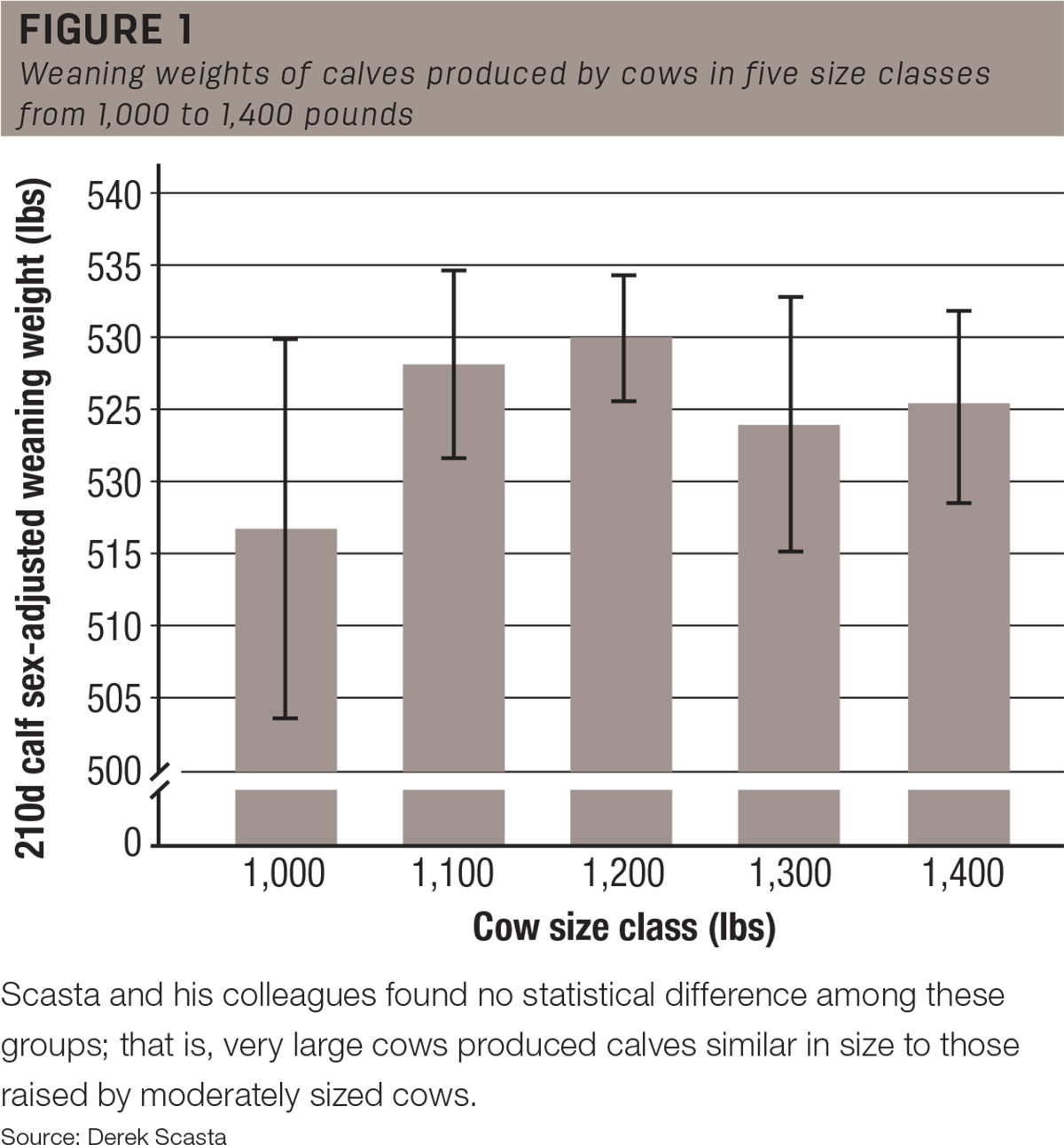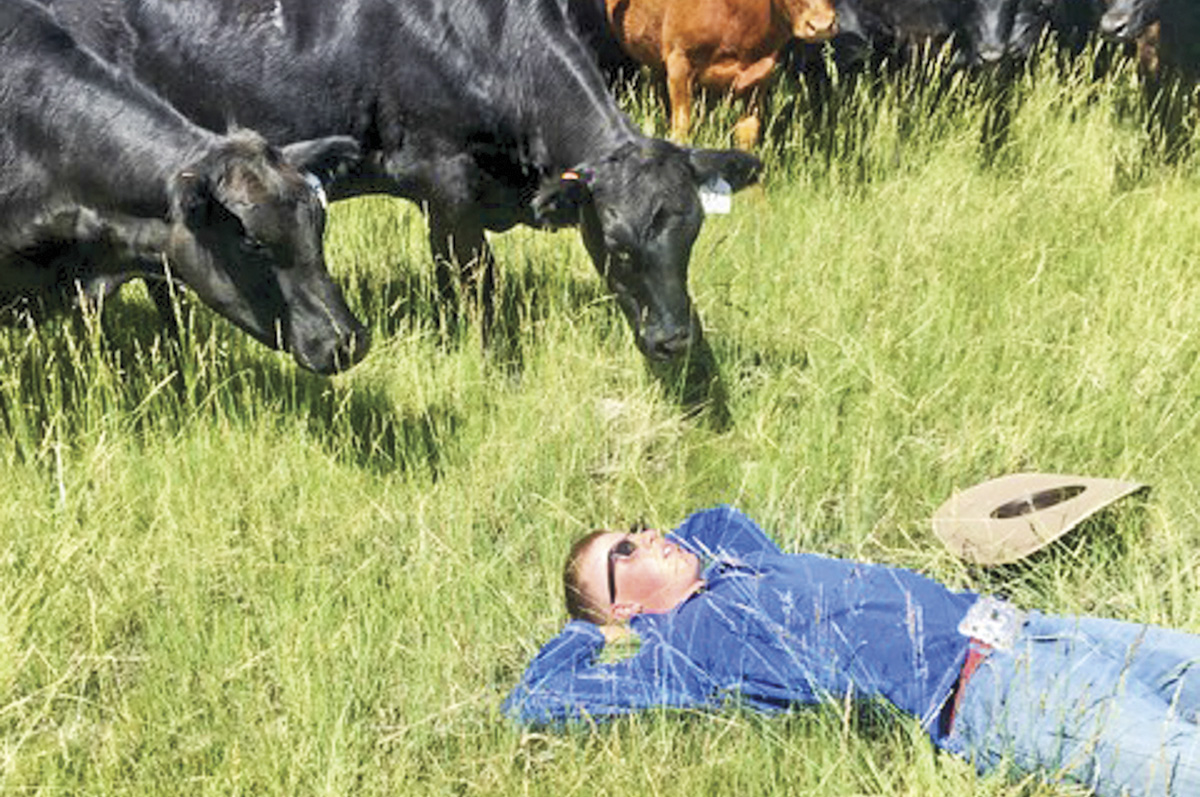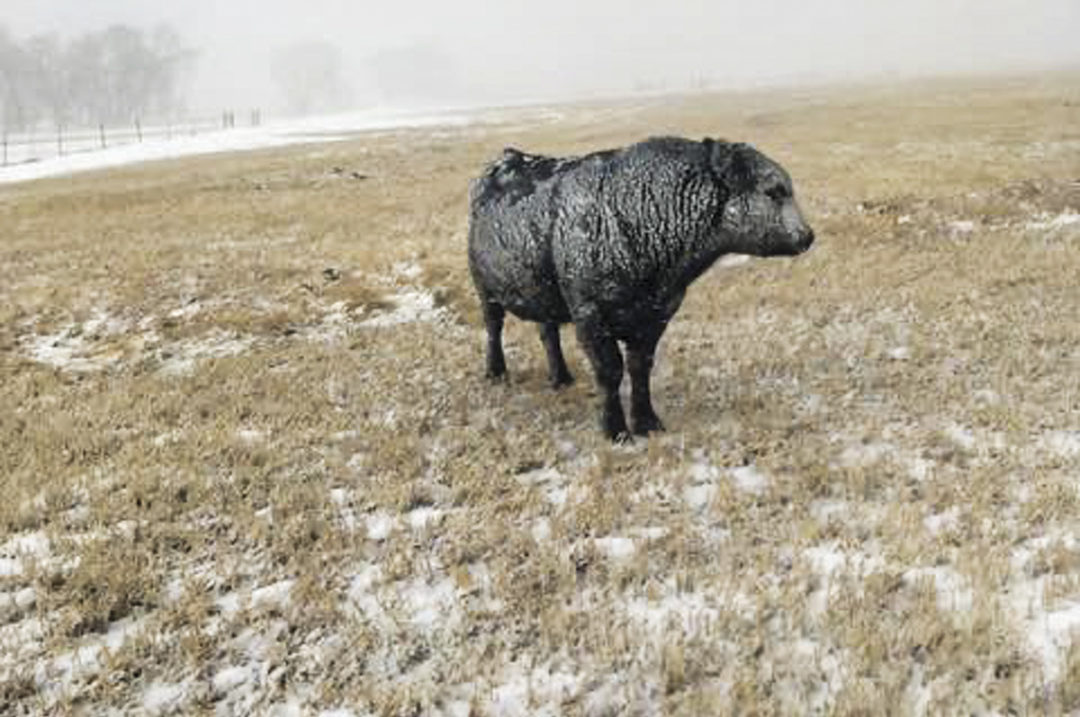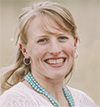If you’ve ever browsed photos from cattle shows of decades past, you’ve seen a striking shift to longer, taller and altogether “framier” U.S. cattle over the years. From 1975 to 2009, average beef cow weight increased by 29%. Beef production has increased even as the national cattle inventory decreased.
Dr. Derek Scasta, extension range specialist at the University of Wyoming (UW), first noticed this trend in his step-grandfather’s herd in Texas a decade ago. It’s a national phenomenon. In 2016, Drovers reported bruising on the backs of 68% of U.S. beef carcasses from entering and exiting semitrailer belly compartments. This waste ultimately costs the industry as much as $35 million dollars annually. Packers are also finding carcasses too large for the rails, and primal cuts are too large for consumers.
Cow efficiency
Unfortunately, research indicates this growth happens off the ranch, after weaning. Scasta’s work with data from UW’s McGuire Ranch near Laramie bears this out.
Scasta and his colleagues evaluated four years (2011-14) of cow size and weaning weight data on 80 Angus/Gelbvieh-cross cows and their calves. Since cow size directly affects intake requirements, they asked whether the larger cows would produce hefty enough weaned calves to offset increased feed costs. “We wanted to know: Do they achieve their genetic potential?” Scasta says.

The answer is evidently “no” on arid rangelands. The researchers found no significant difference in weaned calf size between 1,400- and 1,100-pound cows, making larger cows less efficient. “When you think about bang for your buck,” Scasta says, “it takes almost 2 pounds more forage or feed [daily] to get the same output.”
He adds that forage supply is limited on most ranches. If a producer favors larger cows, he will necessarily run fewer head – and wean fewer calves – than with smaller animals. That’s if he’s paying attention. If, as forage requirements increase, he assumes his ranch’s stocking rate to be the same as ever, he may be overstocking. Then those big cows will need more and more supplementation to maintain good condition with stable or declining forage availability – particularly in drought years.
A war on cow size
Forty-five miles northwest of UW, Shanon and Melinda Sims have been thinking about how cow size affects their family ranch since about 2005. “More than anything,” Melinda says, “our goal is to raise a cow fit to our area at 7,280 feet [elevation]. A large cow just can’t do it.”
Nor can cows under 1,000 pounds, for that matter. So when, as Melinda puts it, “Shanon went to war on cow size” around 2014, the Simses’ goal was to average 1,150- to 1,200-pound animals that fared well on their high desert ranch without heavy inputs.
One facet of their early efforts was A.I.ing with smaller bulls. Scasta says high calving ease and mother’s milk expected progeny differences (EPDs) are high-priority bull traits for most producers. He believes keeping such bulls’ daughters has contributed to cow frame size increases over the years. For the Simses, running against that paradigm proved challenging, as mature offspring weight EPDs were not always available.
 Kagan Sims (Shanon and Melinda’s son) hangs out with some Angus/Gelbvieh/Simmental-cross yearling heifers on the Sims Ranch in southeast Wyoming. Photo provided by Melinda Sims.
Kagan Sims (Shanon and Melinda’s son) hangs out with some Angus/Gelbvieh/Simmental-cross yearling heifers on the Sims Ranch in southeast Wyoming. Photo provided by Melinda Sims.
Then there is the tendency to keep the longest, tallest, best-growing heifers for replacements. “Not only is [the producer] selecting bulls that have larger
daughters, but he’s going back and selecting the larger daughters,” Scasta says. This is precisely why the other early facet of the Sims’ strategy was to run yearlings over the scales and to intentionally select replacements from the midweight heifers.
Shifting focus
The Simses realized before long they were still not meeting their goals. So they developed a new strategy to put Mother Nature to work in heifer selection. “We’ve completely stepped aside,” Shanon says.
They now keep a closed herd of about 650 mother cows, 150 replacements and 40 bulls. Calves stay on the cows for nine to 10 months. After February weaning, heifers go on a basic ration until spring greenup. They turn in the bulls in July and sell open heifers for stockers in the fall. “Our cows are more consistently maturing out in the 1,150- to 1,200-pound range,” Shanon says. “And we definitely don’t have 1,400-pound cows anymore.”
The transition to smaller cattle was not always pretty. “Calving ease went downhill with our heifers not grown out as much,” Shanon says. On their worst year, they pulled close to 25% of their first-calf heifer calves. “But that’s one thing that’s really heritable – you can get past it quickly.” In 2021, seven years into the project, they pulled about 4%.
Profitability and resilience
While cow size is an important piece of the changes on the Sims Ranch, Melinda says it’s part of a whole-management strategy. They are trying to run in sync with their environment with fewer inputs.
And while large cows are generally less efficient at using low-quality resources to raise a calf, Scasta says individuals vary. Melinda cites one big Sims cow that “we would have culled if we were just going by weight.” Yet she consistently stays in condition and raises a good calf.
More important than weight, Shanon believes, is a cow’s natural body condition score, achieved without heavy supplementation. “We put on a big bandage,” he says of their old practice of raising replacements in feedlots. “When we pulled it off, it exposed a big wound.”
Sims Ranch now focuses on longevity and fertility, two factors Scasta says large size can diminish. “Melinda can tell more fertile cows by looking at them,” Shanon says. “I think if the manager could get good at that, they could use that metric. That’s a better tool than a set of scales.”
Their cow herd today is specifically adapted to the ranch. “Some places might support bigger cows, but it’s worth looking at whether cow size is hurting your profitability,” Melinda says.
“We’re really pushing the limits on finding fertile cows and bulls and using our range resources,” Shanon says. “All the pieces together have made us a more profitable ranch in the short term, and I think it will make us more resilient in the long term.”






